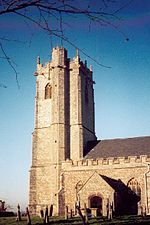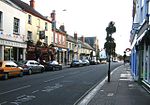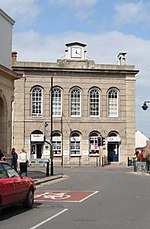South West England, or the South West of England, is one of the nine official regions of England in the United Kingdom. It consists of the counties of Cornwall (including the Isles of Scilly), Dorset, Devon, Gloucestershire, Somerset and Wiltshire. Cities and large towns in the region include Bath, Bristol, Bournemouth, Cheltenham, Exeter, Gloucester, Plymouth and Swindon. It is geographically the largest of the nine regions of England with a land area of 9,203 square miles (23,836 km2), but the third-least populous, with approximately 5.7 million residents.The region includes the West Country and much of the ancient kingdom of Wessex. It includes two entire national parks, Dartmoor and Exmoor (a small part of the New Forest is also within the region); and four World Heritage Sites: Stonehenge, the Cornwall and West Devon Mining Landscape, the Jurassic Coast and the City of Bath. The northern part of Gloucestershire, near Chipping Campden, is as close to the Scottish border as it is to the tip of Cornwall. The region has by far the longest coastline of any English region.
Following the abolition of the South West Regional Assembly in 2008 and Government Office in 2011, South West Councils provide local government coordination in the region. Bristol, South Gloucestershire, and Bath and North East Somerset are part of the West of England Combined Authority.
The region is known for its rich folklore, including the legend of King Arthur and Glastonbury Tor, as well as its traditions and customs. Cornwall has its own language, Cornish, and some regard it as a Celtic nation. The South West is known for Cheddar cheese, which originated in the Somerset village of Cheddar; Devon cream teas, crabs, Cornish pasties, and cider. It is home to the Eden Project, Aardman Animations, the Glastonbury Festival, the Bristol International Balloon Fiesta, trip hop music and Cornwall's surfing beaches. The region has also been home to some of Britain's most renowned writers, including Daphne du Maurier, Agatha Christie and Enid Blyton, all of whom set many of their works here, and the South West is also the location of Thomas Hardy's Wessex, the setting for many of his best-known novels.











